Sydney is a beautiful city with hundreds of trees lining the city. Away from the city, you will find a variety of trees planted in homesteads and along roads.
The most common trees in Sydney are
- Bottlebrush
- White Gum
- Sydney Golden Wattle
- Moreton Bay Fig
- Macadamia
- Sydney Red Gum
- Silky Oak
- Norfolk Pine
- River Red Gum
There are many trees in Australia. The different trees grow in different areas differently. The following are the trees that grow well in Sydney.
Table of contents
ToggleBottlebrush
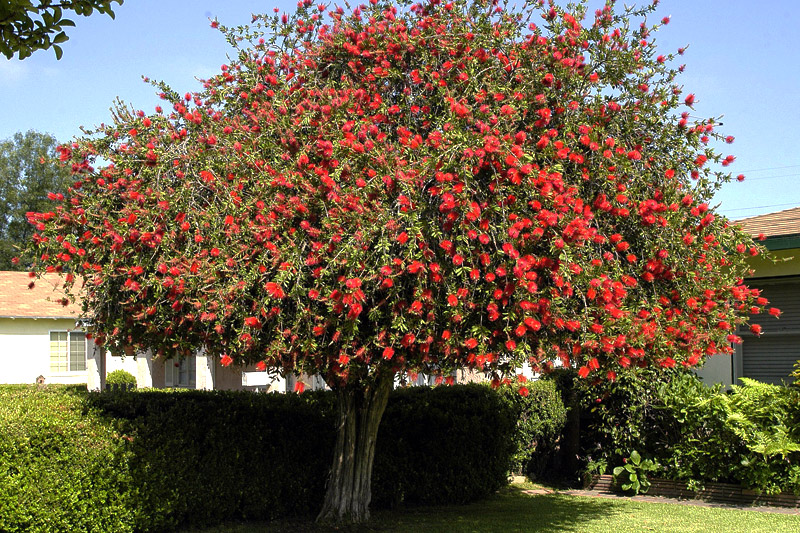
| Scientific Name | Callistemon |
|---|---|
| Type | Evergreen, Shrub |
| Attracts | Nectar seeking birds and bees |
| Uses | Ornamental Antibacterial, antifungal, and antioxidant properties |
| Grow Best | Sunny with sufficient wate |
| Appearance | Sturdy tree with red flowers that resemble a bottle brush, hence the name |
| Maintenance | Require little maintenance, hardy and frost tolerant |
| Plant Size | Grows up to 4m in height |
White Gum
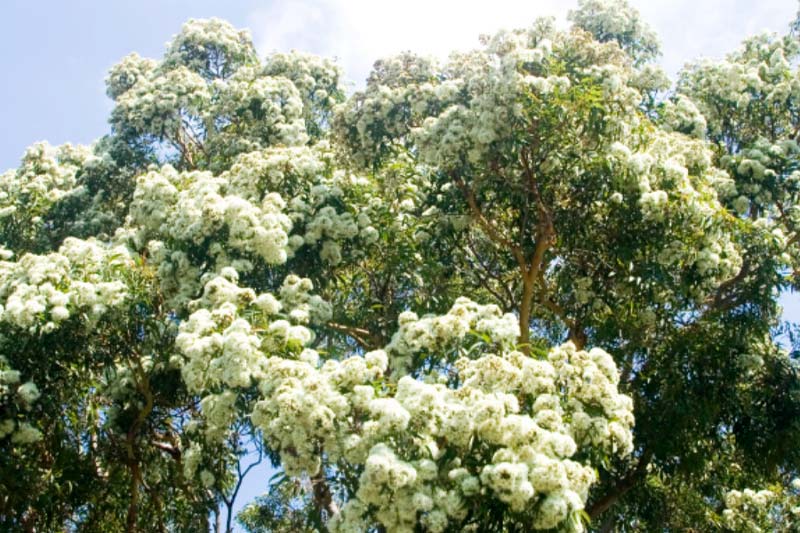
| Scientific Name | Eucalyptus Viminalis |
|---|---|
| Type | Evergreen, Tree |
| Plant Size | Grows up to 50-90m in height |
| Grow Best | High rainfall areas |
| Attracts | Koalas |
| Uses | Ornamental Windbreaker Medicinal |
| Appearance | Tall tree, with a pleasant and easily recognizable smell. May have a rough or smooth bark, Green leaves, White flowers. |
| Maintenance | Require little maintenance, hardy and frost tolerant |
Sydney Golden Wattle
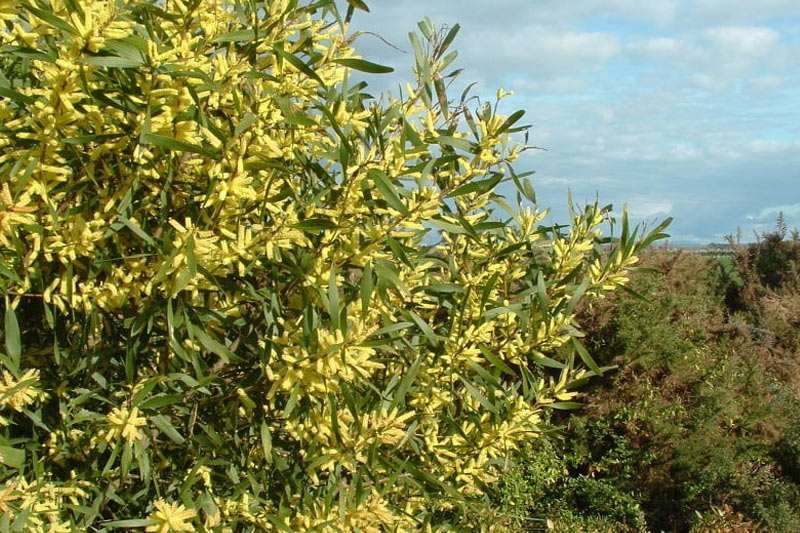
Moreton Bay Fig
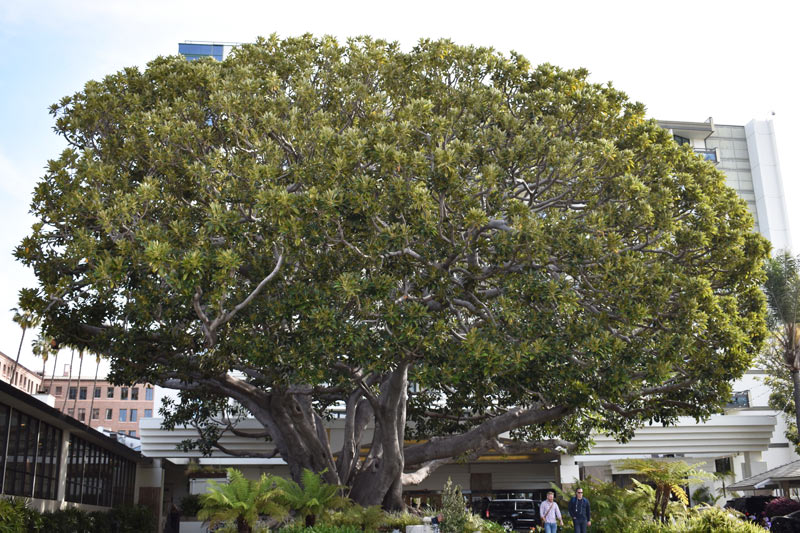
| Scientific Name | Ficus Macrophylla |
|---|---|
| Type | Beautiful trees with intricate root system |
| Attracts | Birds and bees |
| Uses | Shade |
| Grow Best | Tolerates all conditions. Likes sunny conditions |
| Appearance | Large tree with multiple, thick trunks and large branches. Intricate and noticeable root system. Grey-brown bark. |
| Maintenance | Require little maintenance |
| Plant Size | Grows up to 20-60m in height and 40m root spread. |
| Scientific Name | Acacia Pycnantha |
|---|---|
| Type | Evergreen small tree |
| Attracts | Birds and bees |
| Uses | Windbreaker On the Australian Coat Of Arms |
| Grow Best | Tolerates all conditions. Over 1000 species are found in Australia. |
| Appearance | Light-yellow flowers. Dark-brown bark |
| Maintenance | Require little maintenance |
| Plant Size | Grows up to 3- 8m in height |
Macadamia
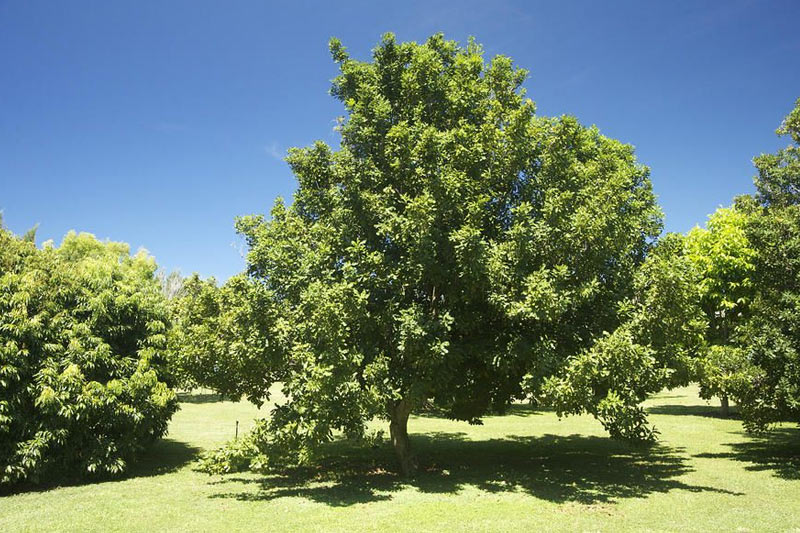
| Scientific Name | Macadamia Tetraphylla |
|---|---|
| Type | Evergreen tall trees |
| Attracts | Birds and bees |
| Uses | Takes 7 years to grow and produce nuts for 100 years. Shade Beautiful flowers |
| Grow Best | Tropical and sub-tropical regions |
| Appearance | Green leaves Dark bark Nuts covered in fleshy green |
| Maintenance | Require little maintenance |
| Plant Size | Grows up to 30-40ft in height |
Sydney Red Gum
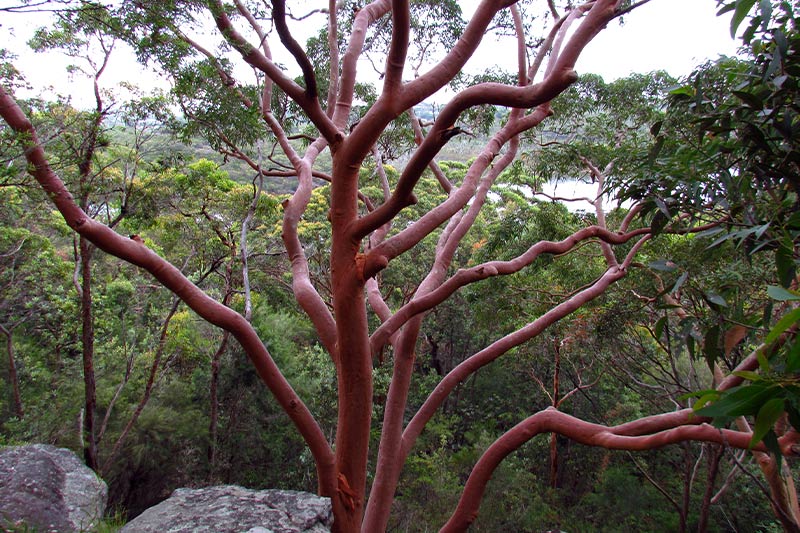
| Scientific Name | Angophora Costata |
|---|---|
| Type | Evergreen tall trees |
| Attracts | Birds and bees |
| Uses | Ornamental Windbreaker |
| Grow Best | Tropical and sub-tropical regions with loam soil |
| Appearance | Orange-red bark with crisscrossed branches. Fades to grey with age. |
| Maintenance | Require little maintenance |
| Plant Size | Grows up to 30m in height with branches growing up 15m. |
Silky Oak
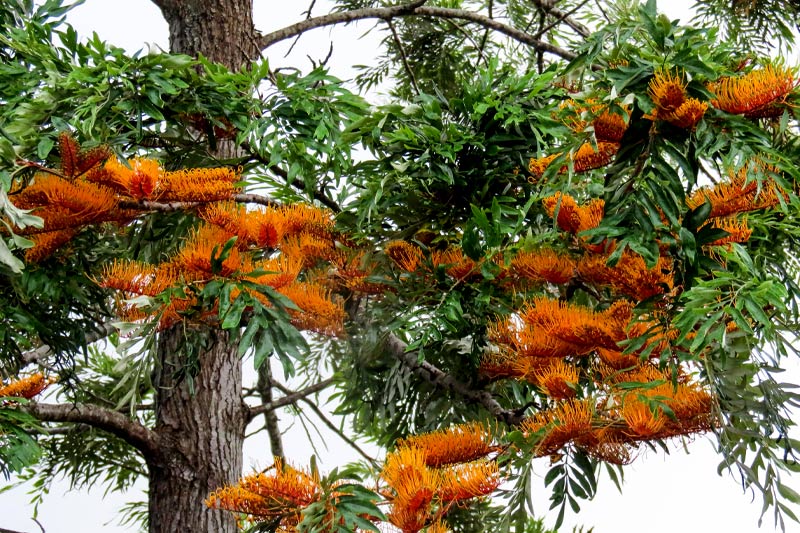
| Scientific Name | Grevillea Robusta |
|---|---|
| Type | Evergreen tall trees |
| Attracts | Birds and bees |
| Uses | Timber |
| Grow Best | Tropical and sub-tropical regions with loam soil |
| Appearance | Single trunk Dark grey bark Yellowish and reddish-orange flowers when flowering |
| Maintenance | Require little maintenance |
| Plant Size | Grows up to 30m in height with branches growing up 15m. |
Norfolk Pine
| Scientific Name | Araucaria Heterophylla |
|---|---|
| Type | Evergreen tall trees |
| Attracts | Birds and bees |
| Uses | Timber Shade Some species are grown as indoor plants Ornamental |
| Grow Best | Tropical and sub-tropical regions with loam soil |
| Appearance | Straight dark trunk Branches arranged as symmetric whorls |
| Maintenance | Require little maintenance |
| Plant Size | Grows up to 60m in height with up to 3m diameter of trunk |
River Red Gum
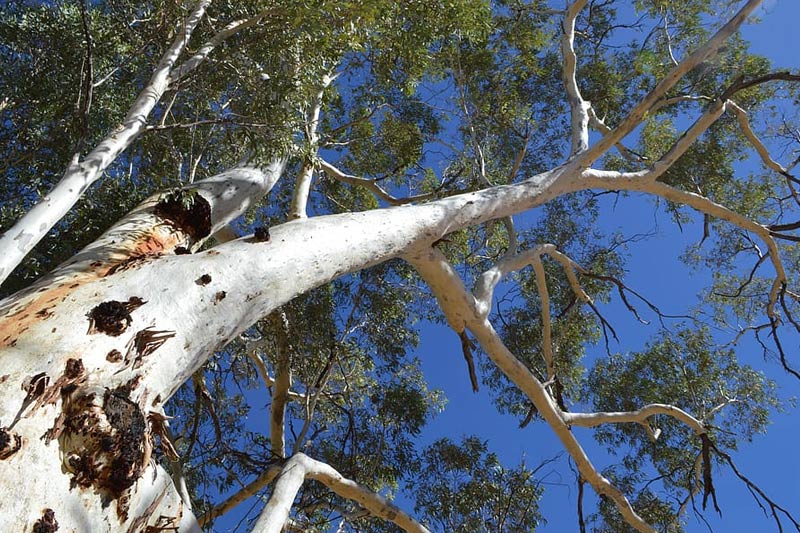
| Scientific Name | Eucalyptus Camaldulensis |
|---|---|
| Type | Evergreen tall trees |
| Attracts | Birds and bees |
| Uses | Cultural heritage Natural habitats and ecosystems Some species are grown as indoor plants Ornamental Timber |
| Grow Best | Wetlands Found mostly along rivers |
| Appearance | Smooth white or cream bark Tall Eucalyptus smell |
| Maintenance | Require little maintenance |
| Plant Size | Grows up to 3m in height |
| Lifespan | 500-1000 years |
FAQ's
Certain conditions will determine whether you need a permit to prune your tree. If your tree is taller than or wider than 5m or, considered a bio-security threat or, considered a heritage tree, you will need a permit to prune it.
You will need a tree specialist to advise you on whether you need a permit for the type of tree you want to prune. Otherwise, you can visit your local government office to find out.
Gotreequotes.com.au is an easy-to-use, free tool that connects homeowners to professional arborists quickly. To use the tool, enter your zip code in the space provided at the top of the page. Then, fill out the subsequent form to provide more information on the tree you need to be pruned or cut.
Your information will then be sent to arborists. You will then receive three quotes and advice from arborists near you. You can easily pick one of the three arborists to help prune your tree.
In Sydney, some conditions allow you to prune your neighbor’s tree without prior communication. If there are any branches on your side, you are allowed to prune them without the permission of the owner of the tree. When you do this, make sure that you do not prune it beyond the boundary between you and your neighbor.
Street trees are pruned to remove dead and dangerously overhung branches. Overgrown street trees that block traffic flow and street trees whose branches are close to buildings will also be pruned. Street trees are also pruned to allow them to maintain their health and also when they obstruct traffic signs.
Street trees will not be pruned to improve the views on the street. Additionally, street trees will not be pruned if pruning them will go against the laws. Also, street trees will not be pruned to increase the amount of light on private property. They will also not be pruned to reduce leaf fall.
The City Of Sydney authorities will prune or remove street trees that need to be removed. If you have a complaint about street trees, you need to notify them. They will assess the tree and decide how to help solve your problem.






